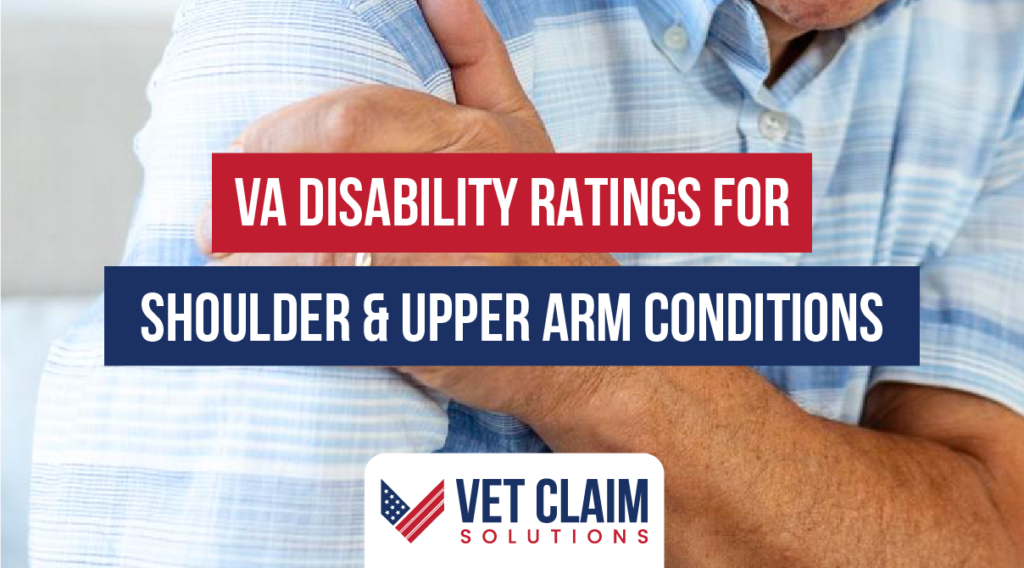Are you a veteran seeking disability benefits due to an injury or illness related to your shoulder and upper arm? If so, it’s important to understand how the U.S. Department of Veterans Affairs (VA) evaluates these conditions when assigning a disability rating. This blog post will look closely at VA disability ratings for shoulder, and upper arm conditions, including the criteria, used to determine eligibility. Read on to learn more!
Common Types of Shoulder and Arm Injuries for Veterans
Many veterans suffer from shoulder and arm injuries due to the activities they undertake in service. These can be caused by various activities such as lifting heavy items, transporting supplies, physical training, or even combat-related incidents such as blunt force trauma, forceful impact, or falls. Below are some of the more common shoulder and arm conditions that veterans experience:
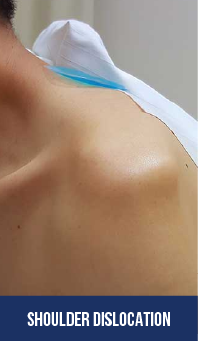
Shoulder Dislocation :
This occurs when the upper arm bone pops out of its socket in the shoulder blade. Symptoms range from swelling, bruising, and pain to loss of movement in the shoulder or arm. The dislocation may also be visible.

Shoulder Separation
This is when the ligaments connecting the collarbone, or clavicle, to the shoulder become stretched or torn. In some cases, surgery may be needed to repair the separation, and symptoms include pain, weakness, bruising, swelling, and limited movement.

Rotator Cuff Tear
The rotator cuff is a collection of muscles and tendons surrounding the shoulder joint, which keeps the head of the upper arm bone in its socket. Usually, one single injury can cause a rotator cuff tear. However, extensive tears may not be repairable. Symptoms include pain, weakness, and difficulty lifting or moving the arm.
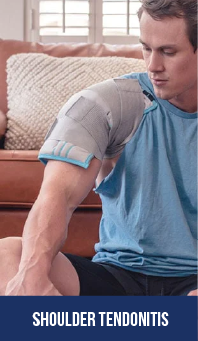
Shoulder Tendonitis
Shoulder tendonitis develops when the biceps and rotator cuff tendons become aggravated. Symptoms vary from mild to severe and can include pain or limited mobility in the shoulder area.

Shoulder Bursitis
Similar to shoulder tendonitis, shoulder bursitis is caused by inflammation which usually affects the subacromial bursa lying between the rotator cuff and shoulder blade. This can cause stiffness and pain in the affected area.
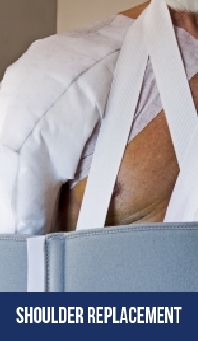
Shoulder Replacement
Shoulder replacement is usually required to reduce pain and increase the shoulder joint’s range of motion, strength, and function. Often this surgery is necessary due to severe arthritis or serious fracture. Artificial implants are typically used during the replacement procedure.

Shoulder Amputation
In severe cases, the arm or shoulder may need to be amputated due to an injury. The VA provides specific rating codes which apply in this situation.
How VA Rates Shoulder and Arm Conditions
Generally speaking, VA rates shoulder and arm conditions under both 38 CFR § 4.71a – Schedule of Ratings – Musculoskeletal System and § 4.73, Schedule of Ratings – Muscle Injuries. The following Diagnostic Codes are included under the former and evaluated based on the range of motion of a major/minor joint group:
Diagnostic Code 5200 – Scapulohumeral articulation, ankylosis (abnormal stiffening and immobility) of:
- 50% (major)/40% (minor) – unfavorable, abduction limited to 25 degrees from side
- 40/30% – intermediate between favorable and unfavorable
- 30/20% – favorable, abduction to 60 degrees, can reach mouth and head
Diagnostic Code 5201 – Arm, limitation of motion of:
- 40/30% – to 25 degrees from side
- 30/20% – midway between side and shoulder level
- 20/20% – at shoulder level
Diagnostic Code 5202 – Humerus, other impairment of:
- 80/70% – loss of head of (flail shoulder)
- 60/50% – nonunion of (false flail joint)
- 50/40% – fibrous union of
- Recurrent dislocation of scapulohumeral joint
- 30/20% – with frequent episodes of guarding of all arm movements
- 20/20% – with infrequent episodes, and guarding of movement only at shoulder level
- Malunion of
- 30/20% – marked deformity
- 20/20% – moderate deformity
Diagnostic Code 5203 – Clavicle or scapula, impairment of:
- 20/20% – dislocation of
- Nonunion of
- 20/20% – with loose movement
- 10/10% – without loose movement
- 10/10% – malunion of
The Diagnostic Codes under 38 CFR § 4.73 for shoulder and arm conditions are split into six groups based on the limitation of motion of the different affected muscles. All of the criteria include severe, moderately severe, moderate, or slight and corresponds to a disability rating ranging from 0 to 40 percent. The disability rating assigned also depends on whether the veteran’s dominant (higher evaluation) versus non-dominant (lower evaluation) arm is affected.
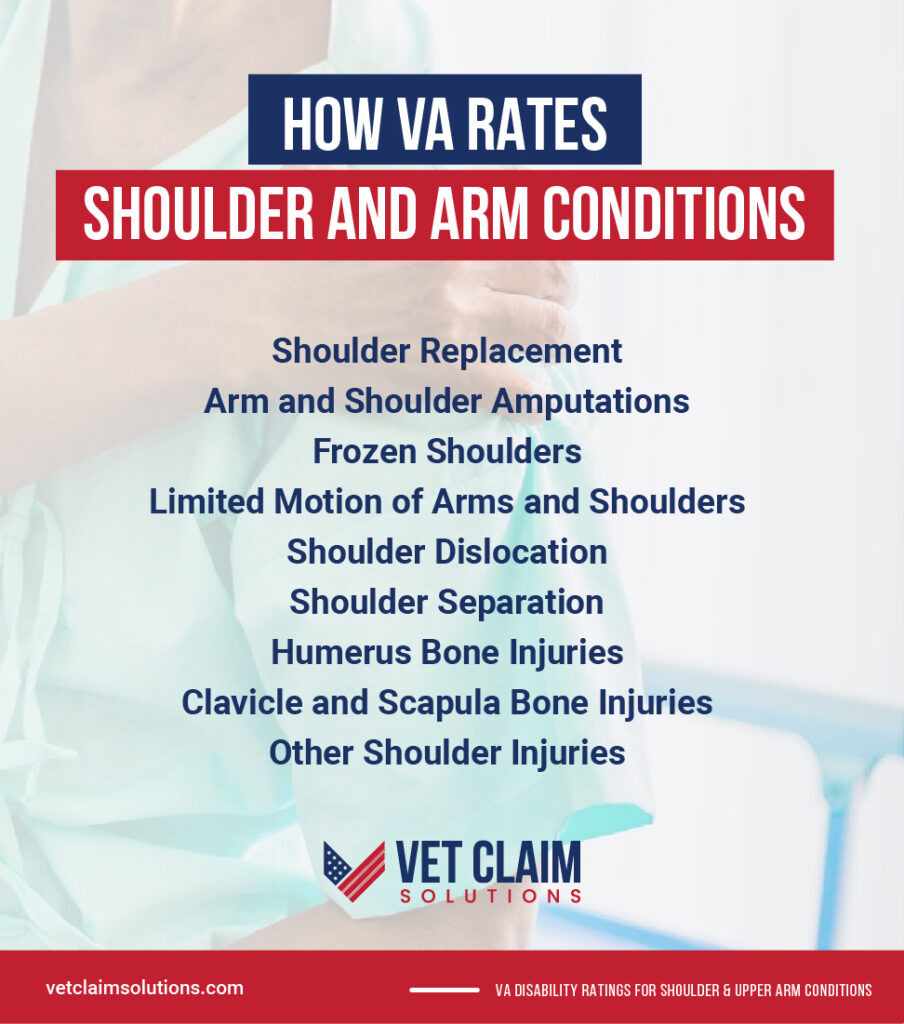
Shoulder Replacement
Shoulder replacement receives a code of 5051 under the VASRD and is eligible for a 100 percent disability rating for one-year post-surgery. Following the initial year, VA will assess your level of function once you heal fully and assign a permanent rating according to the severity of your condition. Generally, shoulder replacement receives a minimum permanent rating of 30 percent for a dominant arm and 20 percent for a non-dominant one. Still, it could range up to 50 or 60, depending on the severity of your condition.
Arm and Shoulder Amputations
In more severe cases, you may need to amputate your arm up to the shoulder. In such cases, VA will assign a maximum rating for loss of use of that arm. However, multiple injuries in the arm cannot be combined for a higher rating than the one you would receive for amputation.
If you have to have your entire arm and shoulder amputated, you will receive a 90 percent disability rating. Those who need the arm amputated up to the deltoid will get an 80 percent rating, while anyone with arm amputation below the deltoid will be assigned a 70 percent rating under code 5200.
Frozen Shoulder
For those with a frozen shoulder, the VA considers the severity and degree of movement limitations when making disability ratings. The VA assigns a code of 5010 for a frozen shoulder, which is eligible for a disability rating from 10 to 40 percent, depending on the severity. For instance, if your shoulder can move 25 degrees from your side, you will receive a 50 percent rating for a dominant arm or 40 percent for a non-dominant arm.
Limited Motion of the Arm and Shoulder
Sometimes, you may not have a completely frozen shoulder but limited motion. If your arm does not move more than 25 degrees away from your side, VA will assign a disability rating of 40 percent for a dominant arm or 30 percent for a non-dominant arm under code 5201. If you can move your arm 45 degrees, then the VA will assign a rating of 30 percent for a dominant arm and
Twenty percent for a non-dominant arm. At 90 degrees of motion, you’ll get a rating of 20 percent, no matter which arm is affected.
Shoulder Dislocation
Shoulder dislocation is a common condition that affects many veterans. The VA assigns code 5202 for shoulder dislocations, and ratings are based on the frequency of dislocations. For frequent dislocations, a rating of 30 percent will be given to the dominant arm or 20 percent to the non-dominant arm. If there are occasional dislocations, a rating of 20 percent will be awarded for either arm.
Shoulder Separation
For those with a shoulder separation, the VA assigns a code of 5203 and a rating of 20 percent for either arm, regardless of severity.
Humerus Bone Injuries
For those with a humerus bone injury, the VA assigns code 5202 and ratings based on the injury’s severity. If you suffer from a complete loss of your humeral head, otherwise known as flail shoulder, you can receive a disability rating of 80 percent for a dominant arm or 70 percent for a non-dominant arm.
For a break in the humeral neck that fails to heal properly, you may be eligible for a rating of either 60 percent or 50 percent. Additionally, if your shoulder is held together by soft tissues instead of bones, a rating of either 50 percent or 40 percent can be assigned.
Finally, if the injury causes a visible deformity in the arm, you can receive a rating of either 30 percent or 20 percent, depending on the arm and severity.
Clavicle and Scapula Bone Injuries
If you suffer from a clavicle or scapula injury, the VA assigns code 5203 with ratings depending on the severity of your injury. If you cannot control arm movement due to broken bones, you will receive a 20 percent rating. You will be awarded a 10 percent rating if the bones do not heal properly. If the bones did heal together but not properly, you can also receive a 10 percent rating.
Other Shoulder Injuries
The VA also accounts for other shoulder-related conditions, such as degenerative arthritis and osteoporosis. These can cause significant pain and impairment to daily life for veterans. Depending on the severity of these conditions, disability ratings between 10 and 100 percent may be assigned. Additionally, cancer or tumors caused by military service can impact your shoulder mobility, and the VA recognizes this, assigning ratings accordingly.
For conditions that affect your shoulder movement regularly, such as pain when it rains, the VA will assign a 10 percent rating. However, for more severe cases where daily life is completely disrupted due to shoulder discomfort or immobility, veterans can be eligible for a 100 percent disability rating. No matter the shoulder condition, the VA is dedicated to providing veterans with appropriate disability ratings for their service-connected shoulder conditions.
How to Service Connect Your Shoulder Pain

a) Direct Service Connection
Direct service connection for shoulder pain requires proving that your current condition was caused or worsened by an event or injury during your military service. To do this, you will need to provide evidence such as your service medical records, military records, and a personal statement describing the event during which the injury occurred. Other supporting documents, such as doctor’s reports, X-rays, MRIs, or lab results, may be requested.

b) Secondary Service Connection
If you cannot prove a direct link between your service and shoulder pain, you may still be eligible for disability compensation via a secondary service connection. This is typically the case when an existing service-connected disability has caused or worsened your shoulder condition. For example, if you experience shoulder pain due to surgery for your service-connected back pain, you may be eligible to receive disability compensation. To establish a secondary service connection, evidence is required to prove the relationship between the two disabilities.
How to Obtain a VA Rating for Shoulder Pain
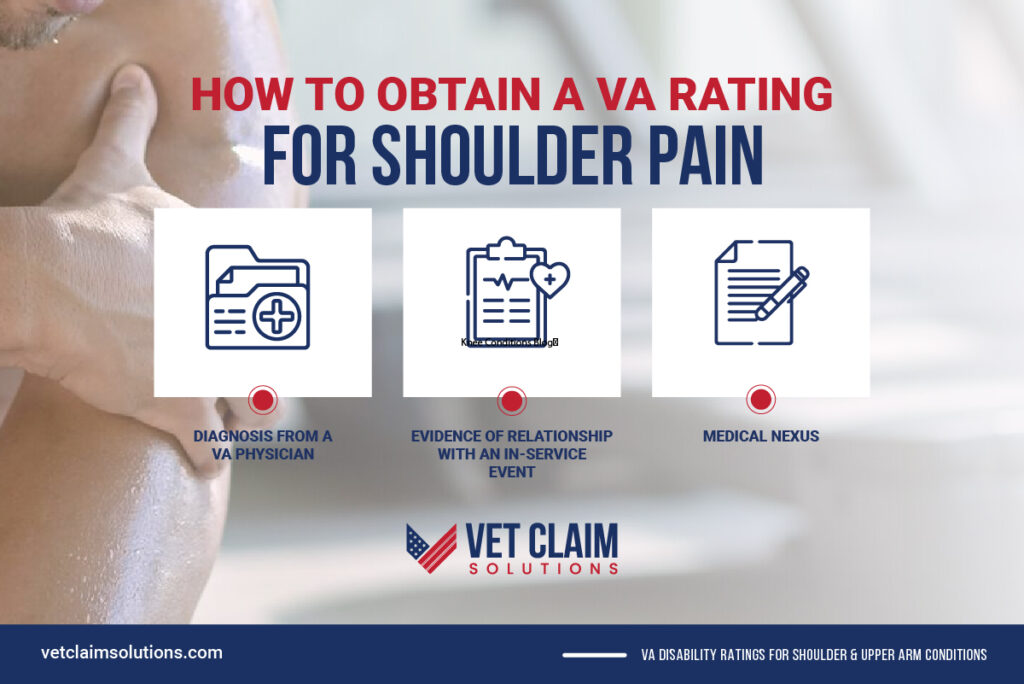
To be eligible for the VA shoulder pain rating, you must meet the following requirements.
- Firstly, your shoulder or arm condition must be formally diagnosed by a VA-approved physician. You will need to provide evidence of this diagnosis through the doctor’s office documentation.
- Secondly, you must demonstrate that your condition was caused by an event, injury, or illness sustained during your service. You will need to provide evidence of this in-service event, such as medical records or an official report.
- Finally, you must also be able to link the in-service event that caused your injury to your current condition. This is known as a medical nexus and can be established through evidence, such as medical records or reports.
Compensation and Pension Exams (C&P) for Shoulder and Arm Conditions
When attending a Compensation & Pension (C&P) exam for shoulder and arm conditions, it is important to prepare beforehand. It can help to write down your symptoms and how they affect you so that you can explain them in detail during the exam. Additionally, you may want to think about what things make your pain worse or better and have a list of any treatments you have tried.
During the exam, the examiner will likely ask questions about your condition and perform a physical examination of your shoulder and arm. The examiner may use a Goniometer to measure the Range of Motion (ROM) in flexion and abduction directions. Each measurement is rounded to the nearest five degrees, so it is important to be as accurate as possible when answering questions and providing information.
The results of the C&P exam will be used to determine your VA rating for shoulder pain, so you must provide detailed answers and accurate measurements. Being prepared and honest during the exam ensures that the examiner has all the necessary information for a successful rating.
The C&P exam is an important part of the VA disability process, so it is important to do your best to provide all the necessary information during this exam.
Need Help Filing a Claim for Shoulder and Upper Arm Conditions
If you are a veteran and need help filing a claim for shoulder pain, the experienced professionals at Vet claim Solutions are of assistance. Our knowledgeable team is dedicated to helping veterans receive the VA disability compensation they deserve.
From helping you understand your options to prepare all the necessary paperwork, we make sure that your claim is handled quickly and efficiently. Contact us today for more information about how we can help you with your claim for shoulder pain.


